Blog
Best Fall Garden Plants That Will Transform Your Fall Garden
Do you feel like your garden loses all its charm once summer blooms fade away?
The shift from July’s bright flowers to bare-looking beds in September can feel a little depressing.
When the days get shorter and summer flowers start to fade, it doesn’t mean your garden has to lose its charm. In fact, fall is one of the best times to add plants that thrive in cooler weather and bring bold color, texture, and interest right up until frost. Whether you’re looking for fiery foliage, show-stopping blooms, or airy ornamental grasses, there are plenty of options that can transform your yard into a colorful autumn retreat. To help you get started, here are five of the best fall garden plants, along with their growing zones, care needs, and planting tips, so you can enjoy a vibrant and low-maintenance landscape this season.
Let’s dive into each one.
5 Best Fall Garden Plants
1. Chokeberry Bush (Aronia)
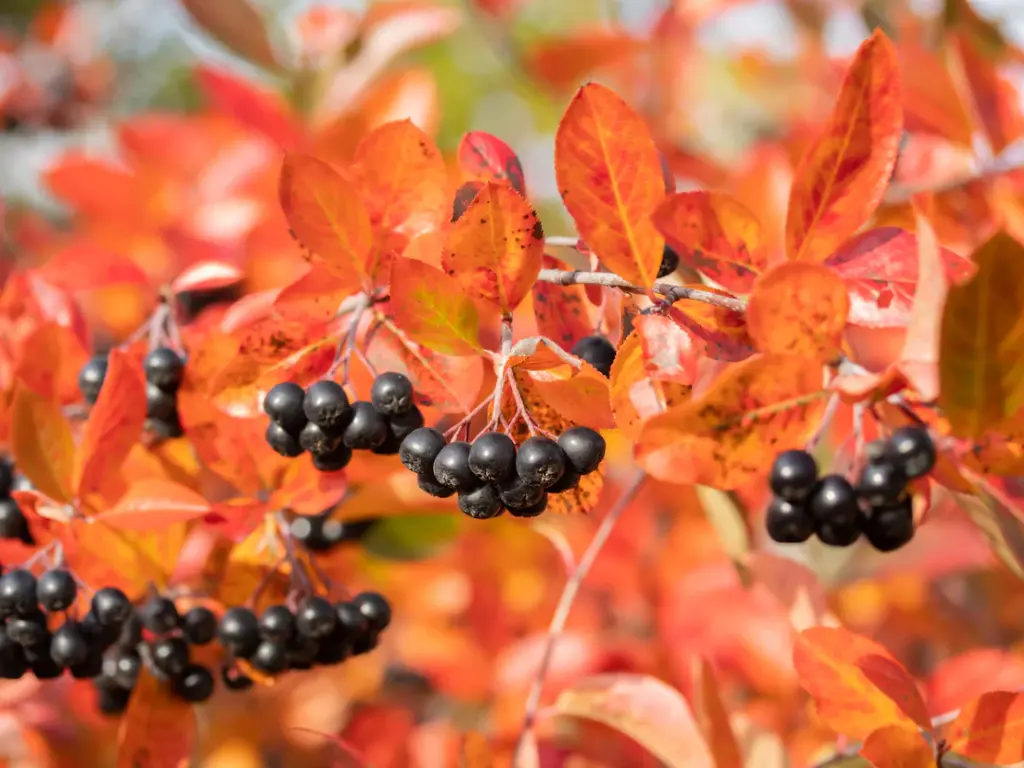
USDA Hardiness Zones: 3 to 8
Light: Full sun to partial shade
Soil: Moist, well-drained; tolerates poor or wet soils
Flower/Fall Interest: White spring flowers, glossy green leaves, vibrant red/orange fall foliage, black or red berries
Deer Resistant: Yes
The chokeberry bush is a tough, multi-season shrub prized for its stunning fall color and wildlife benefits. In autumn, its foliage turns fiery red and orange, while clusters of berries add contrast and provide food for birds. In spring, it also offers pollinator-friendly white blossoms, making it a year-round asset in the garden.
This shrub adapts to a variety of soils, including wet or compacted spots, making it ideal for challenging garden sites. Its durability and multi-season interest make chokeberry a favorite for naturalized landscapes and hedgerows.
Planting Tips:
Space chokeberry bushes about 3 to 6 feet apart, depending on variety. Mulch around the base to retain moisture. Prune lightly in late winter to shape and encourage healthy growth.
I planted a chokeberry hedge along my driveway, and every October it looks like a wall of fire. The berries last well into winter, so even when leaves fall, there’s still visual interest.
2. Chrysanthemums (Mums)
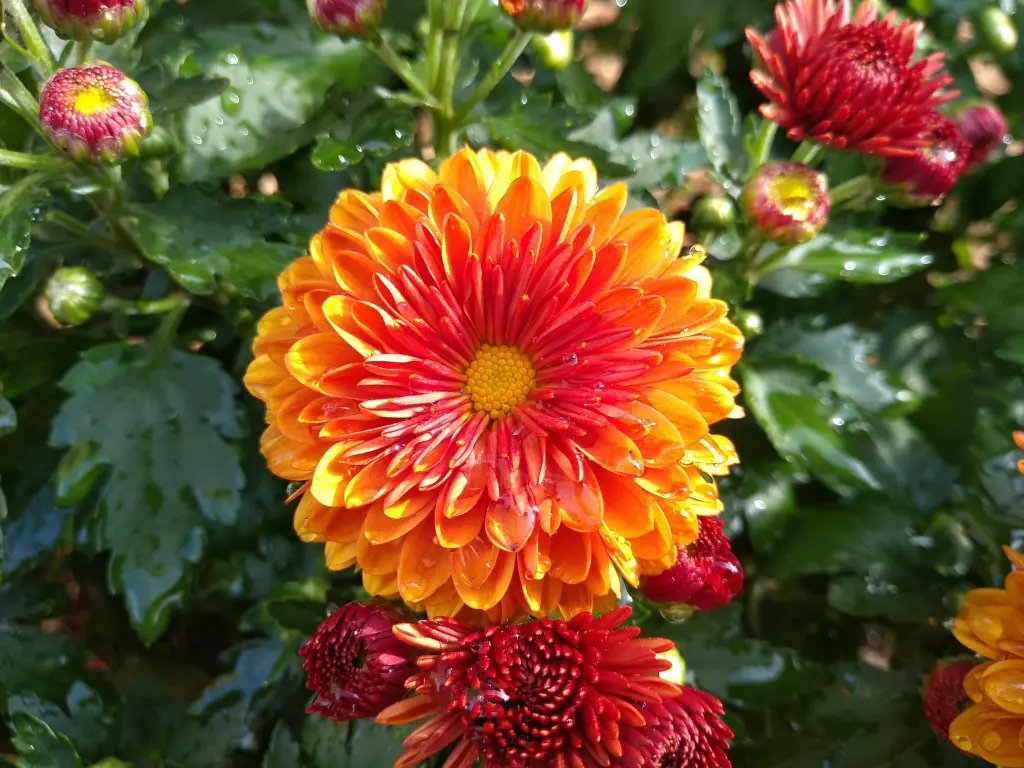
USDA Hardiness Zones: 5 to 9
Light: Full sun
Soil: Well-draining, fertile soil with consistent moisture
Flower Color: Yellow, red, burgundy, white, pink, purple, and more
Deer Resistant: Moderately (but may be nibbled in some areas)
Chrysanthemums, or mums, are the classic symbols of autumn. With their abundant, bold blooms, they provide brilliant color when most other flowers are fading. These perennials are available in a wide range of colors and forms, from cushion-like mounds to daisy-style petals.
To ensure longevity, choose hardy garden mums rather than florist mums. Planted early, they can establish roots and return each year with vibrant fall displays. Mums are perfect for borders, beds, and containers, especially when paired with pumpkins or gourds for a festive seasonal touch.
Planting Tips:
Plant mums in late summer or very early fall, giving them 6 to 8 weeks before the first frost. Space them 18 to 24 inches apart, and pinch back early summer growth to encourage bushier plants.
Pro tip: Pair mums with pumpkins and gourds on your porch for instant curb appeal. It’s a classic American fall look that never fails.
3. Pink Dogwood Tree
USDA Hardiness Zones: 5 to 9
Light: Partial shade to full sun (prefers morning sun and afternoon shade in hotter climates)
Soil: Moist, well-drained, slightly acidic soil
Flower Color: Soft to deep pink blossoms in spring, red fruit in fall, burgundy foliage in autumn
Deer Resistant: Moderately (young trees may need protection)
The Pink Dogwood tree is one of the most beloved ornamental trees for year-round beauty and seasonal interest. In spring, it bursts into bloom with soft pink flowers that brighten up any garden. Through summer, its lush green foliage provides shade, followed by stunning reddish-purple leaves and clusters of red berries in fall, offering food for birds and seasonal color.
Pink Dogwoods are excellent for adding charm and structure to residential landscapes. They make perfect focal points in front yards, along walkways, or as part of mixed garden borders. Once established, they are relatively low-maintenance, though they appreciate protection from harsh heat and strong winds.
Planting Tips:
Dig a hole about twice as wide as the root ball but no deeper. Place the tree carefully, water thoroughly, and mulch around the base to help retain soil moisture. Avoid planting in compacted or poorly drained soil. Young trees benefit from regular watering and may need shade cloth or protection during their first summer in hotter regions.
4. Pink Muhly Grass
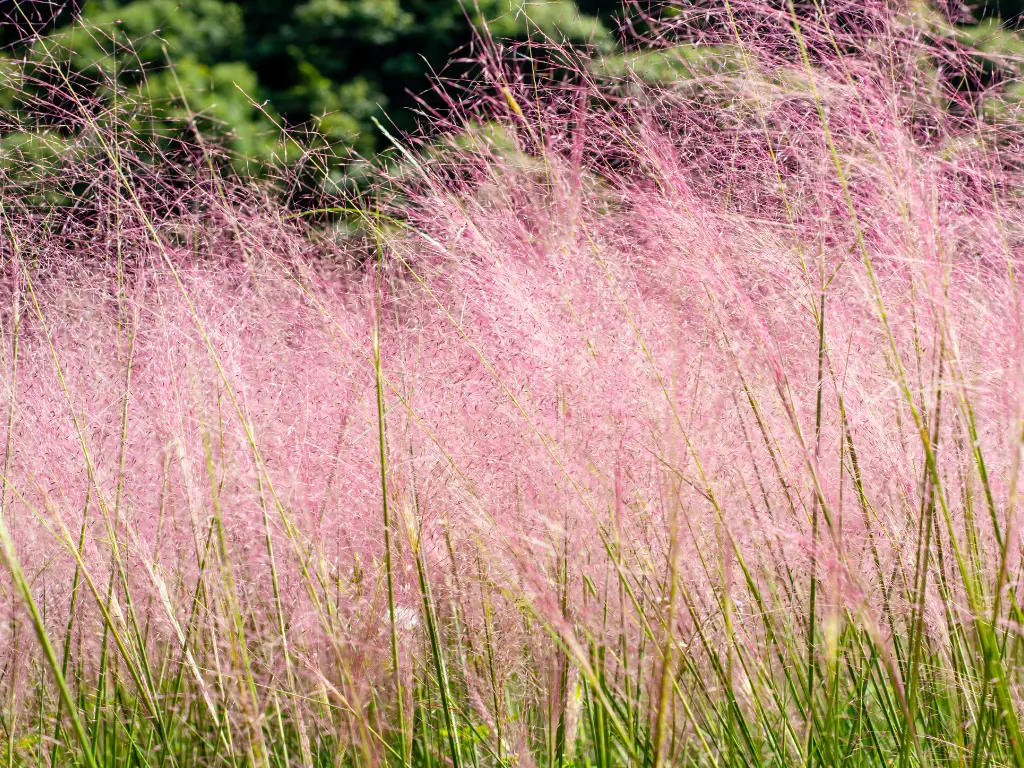
USDA Hardiness Zones: 6 to 9
Light: Full sun
Soil: Sandy or loamy, well-draining soil
Flower/Plume Color: Airy pink plumes in late summer to fall
Deer Resistant: Yes
Pink muhly grass is a standout ornamental grass that adds drama and softness to the fall garden. In September and October, it sends up masses of pink, cloud-like plumes that glow in the sunlight and move beautifully with the wind.
This low-maintenance grass is drought-tolerant and deer-resistant, making it ideal for borders, mass plantings, or as an accent in modern landscapes. Its airy texture pairs well with sturdier perennials and fall flowers.
Planting Tips:
Plant in spring for best results, spacing clumps about 2 to 3 feet apart. Cut back the foliage to the ground in late winter or early spring before new growth begins.
5. Autumn Joy Sedum (Stonecrop)
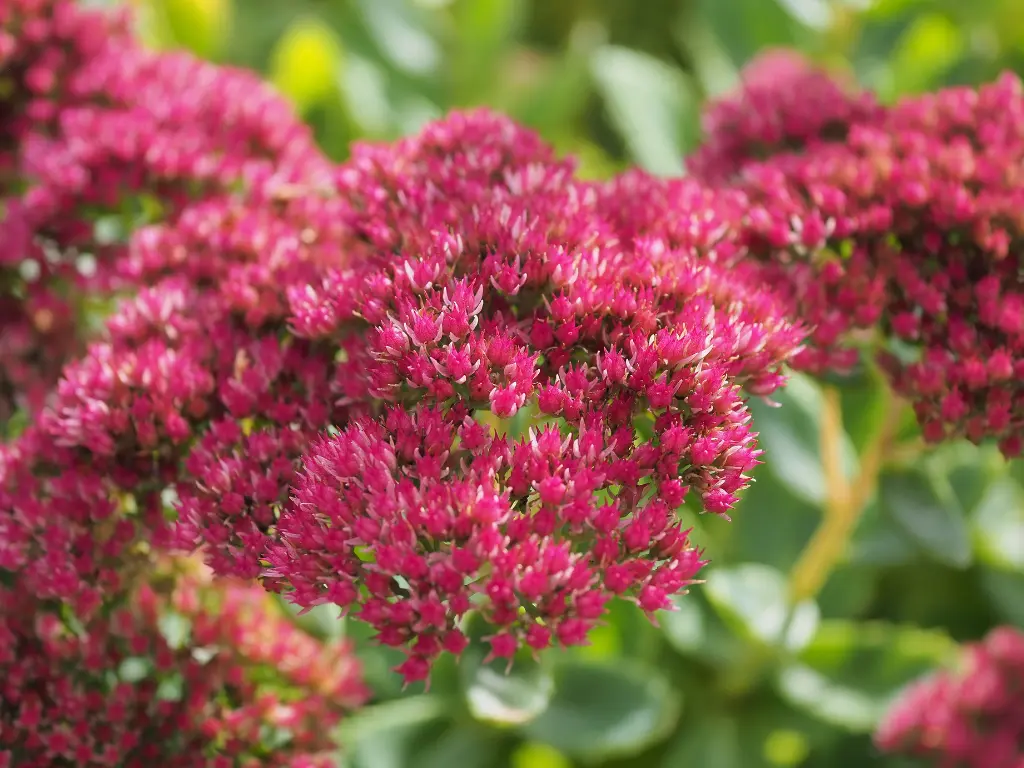
USDA Hardiness Zones: 3 to 9
Light: Full sun
Soil: Well-drained, average to sandy soil
Flower Color: Pink in late summer, deepening to red and bronze in fall
Deer Resistant: Yes
Autumn Joy sedum is a hardy, drought-tolerant perennial that brings months of interest. Its thick, succulent-like leaves give way to large clusters of pink blooms in late summer, which gradually darken to rich red and bronze tones through fall.
This plant is beloved for its resilience and for attracting pollinators like bees and butterflies during the late season. Even after blooming, the dried flower heads add winter interest, making sedum a four-season star.
Planting Tips:
Plant in spring or early summer, spacing 1 to 2 feet apart. Avoid overly rich soil, which can cause floppy stems. Divide clumps every 3 to 4 years to maintain vigor.
Pro Tips for Mixing These Plants
Here’s how to make the most of this list:
-
Plant chokeberry bushes as a backdrop for shrubs and perennials.
-
Use chrysanthemums for bright pops of seasonal color in containers and borders.
-
Mass pink muhly grass for soft texture and movement.
-
Mix in Autumn Joy sedum for pollinator support and long-lasting blooms.
By combining shrubs, trees, grasses, and perennials, you’ll create a garden that looks balanced and interesting well into fall.
Frequently Asked Questions
1. When should I plant these fall garden plants?
Plant shrubs and trees (like chokeberry and Pink Dogwood Tree) in early fall or spring. Mums and sedum should go in the ground by late summer, while pink muhly grass does best when planted in spring.
2. Can I grow mums and sedum in containers?
Yes. Both look fantastic in pots. Just make sure to water regularly and use good potting soil.
3. Do these plants attract pollinators?
Absolutely. Sedum and chokeberry flowers are bee-friendly, and asters (if you pair them with this list) will also attract butterflies.
4. Can I combine these plants with evergreens for year-round interest?
Yes! Pairing fall stars like pink muhly grass or Autumn Joy sedum with evergreens such as boxwood or dwarf conifers ensures your garden keeps structure and color even in winter.
Final Thoughts
A colorful fall garden doesn’t have to be complicated. With just five plants, chokeberry bush, chrysanthemums, pink muhly grass, and Autumn Joy sedum…, you can create a vibrant autumn display that carries your landscape through the season.
So instead of letting your garden fade away after summer, plant these fall favorites and enjoy a second wave of beauty right outside your door.
Happy planting, and here’s to a more colorful autumn!
You may like:

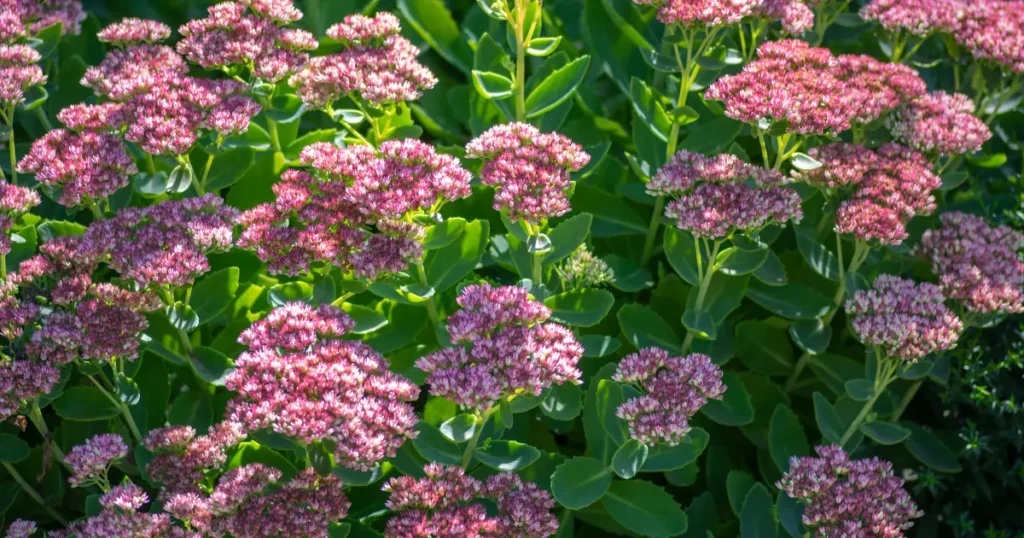
7 Vegetables to Plant in December for a Bountiful Winter Harvest
Winter gardening is a challenge many new gardeners shy away from. But if you’re among [...]
Dec
9 Common Christmas Cactus Problems and How to Fix Them
Have you ever walked past your Christmas cactus and wondered why it suddenly looks sad? [...]
Nov
Swedish Ivy Care: How to Grow a Healthy, Thriving Plant
Have you ever looked at your Swedish Ivy and wondered why the leaves are turning [...]
Nov
Avoid These 10 Garlic Planting Mistakes for Bigger, Healthier Bulbs
Growing garlic at home is one of the most satisfying things a gardener can do [...]
Nov
How to Prevent Christmas Cactus Bud Drop: Tips for a Healthy Bloom
Have you ever noticed your beautiful Christmas cactus (Schlumbergera) starting to lose its buds just [...]
Nov
Discover 7 Stunning Types of Night-Blooming Cereus
Have you ever waited for a flower that only opens at night and then disappears [...]
Nov